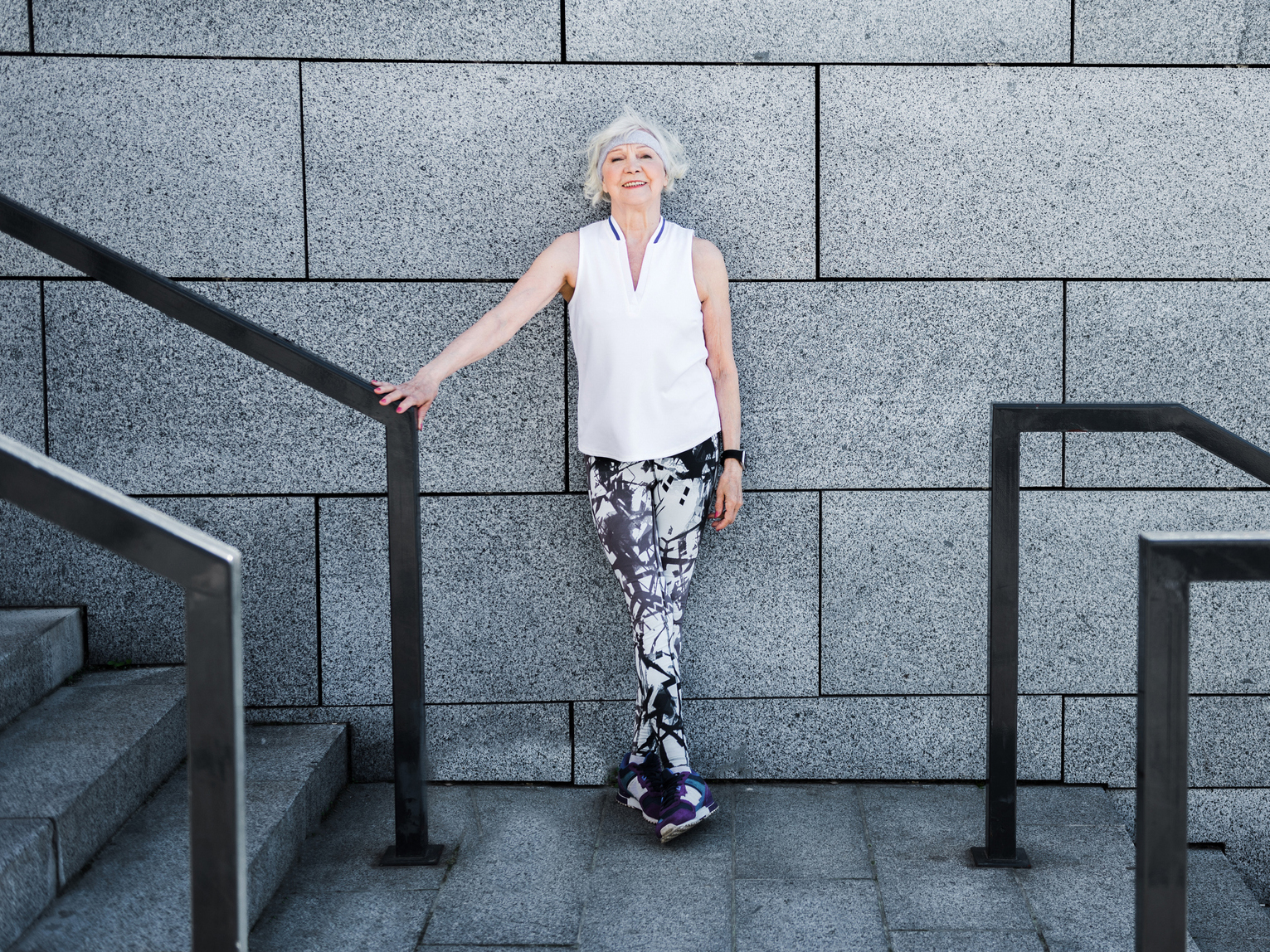Get Easy Health Digest™ in your inbox and don’t miss a thing when you subscribe today. Plus, get the free bonus report, Mother Nature’s Tips, Tricks and Remedies for Cholesterol, Blood Pressure & Blood Sugar as my way of saying welcome to the community!
5 factors that increase your fall risk and how to beat them

I’m in my 60s, and by no means do I think of myself as old or physically limited. But I am finding that I need to be more careful about staying balanced in situations I used to take for granted.
For example, I sometimes lose my balance when I am walking down the stairs unless I hold on. And I no longer take for granted the feeling of being steady on my feet when I have to navigate tight spaces.
I’ve had to face the fact that changes are occurring in my body. A fall now would be far different than when I was younger. It could result in a broken hip, leaving me immobile and more likely to develop blood clots in my legs.
Also, it would result in a loss of muscle mass, leaving me more vulnerable to another fall.
There are other reasons that older adults are more at risk for falls, but, fortunately, there are ways to beat them…
Why seniors are more likely to fall
There are at least five factors that make older persons more likely to take a fall that results in broken bones or head injury…
- Muscle loss. Sarcopenia, or age-related muscle loss, begins around age 40. By the time we are 50, we may be losing 1% to 2% of our muscle mass yearly, resulting in decreased strength.
- Weaker sense of balance. As I described above, age-related changes in the bodily systems that control balance can cause older adults to feel unsteady. The vestibular system of the inner ear changes with age, making imbalance much more likely. Also, some medications impair balance.
- Poor eyesight. Balance depends on an acute sense of vision. As this ability declines in seniors, so does the ability to remain upright.
- Loss of flexibility. Both age and health can make seniors less flexible, especially in the hips and ankles. This stiffness increases the likelihood of a fall.
- Decreased endurance. Along with weaker muscles comes the inability to stand or walk for reasonable amounts of time. This, too, makes it more likely that a person will fall.
10 exercises to prevent falls
According to the Center for Disease Control and Prevention (CDC), three million seniors are treated in emergency rooms every year for fall-related injuries, and one in five of those falls causes serious injury, usually hip fracture or head injury.
But you or your loved one don’t have to become a statistic.
This video link has some simple, at-home fall prevention exercises we’ve found that will strengthen muscles and joints and improve balance.
Do these once or twice a day. If you get bored with exercise, as I do, put on some music and make it a time of enjoyable self-care.
Eating for stronger bones
Even if you should take a fall, it doesn’t necessarily mean disaster. You can fashion your diet around keeping your bones as strong as possible. The things you want to include are:
Vitamin D
Vitamin D helps your body to absorb calcium and phosphorus, important minerals for bone health.
Through age 70, 600 IU is recommended, with 800 IU the recommended amount from age 71 and up. However, in recent years, it’s become apparent that seniors are especially vulnerable to vitamin D deficiency. Higher daily doses between 2000 and 5000 IU are recommended and are perfectly safe.
You may have read about a young man who got very ill and was hospitalized for taking too much vitamin D. He was taking 150,000 IU a day, which is not recommended by anyone. Follow serving instructions on your vitamin bottle or ask your doctor if you have concerns.
Studies also link a deficiency in Vitamin K to low bone mass and a greater chance of fractures…
Vitamin K
The long-term Framingham Heart Study showed a link between low Vitamin K intake and increased risk of hip fractures. The vitamin helps direct calcium to your bones.
Vitamin K is found in kale, Swiss chard, broccoli, and mustard greens, as well as in beef liver, prunes, and cashews.
Check with your doctor before taking a Vitamin K supplement. People who take blood-thinning drugs such as coumadin should not take vitamin K, but can get in food sources.
Magnesium
A magnesium deficiency can weaken your bones by lowering their mineral density. It can cause too much calcium to be secreted from your bones into your bloodstream.
Magnesium is available in supplement form but is readily available in a range of foods, including greens like spinach and chard, summer squash, dark chocolate, almonds, and avocados.
Sweet potatoes, fresh figs, and tofu are three other “superfoods” that promote bone health.
And, several studies show a connection between eating a Mediterranean diet, rich in grains, fish and olive oil, was associated with a higher bone mineral density and a lower number of fractures.
Editor’s note: Did you know that when you take your body from acid to alkaline you can boost your energy, lose weight, soothe digestion, avoid illness and achieve wellness? Click here to discover The Alkaline Secret to Ultimate Vitality and revive your life today!
Sources:
- Important Facts about Falls — Centers for Disease Control and Prevention
- Vitamin D’s Impact on Falls — Today’s Geriatric Medicine
- Dietary Patterns and Fractures Risk in the Elderly — Frontiers in Endocrinology
- Vitamin K – new research shows that this ‘forgotten’ vitamin may be good for your bone health — International Osteoporosis Foundation
- Do You Need Vitamin K Supplements for Your Bone Health? — Cleveland Clinic














